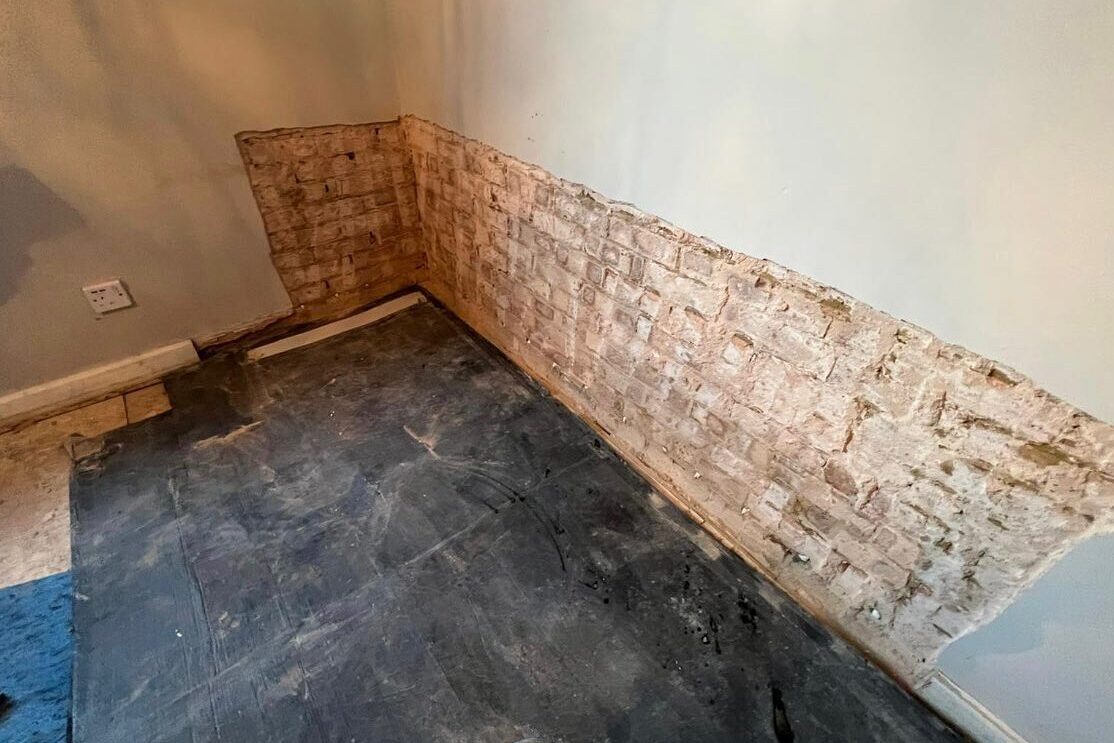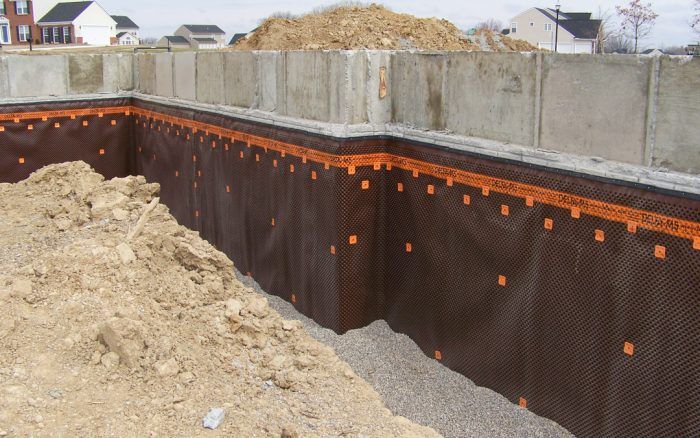Understanding the Value of Damp Proofing in Stopping Structural Damages
Damp proofing functions as a necessary defense against dampness infiltration in structures. This protective measure can stop considerable structural damage, yet many homeowner remain uninformed of its significance. Recognizing the indications of moisture and comprehending the different options available can be essential. Nevertheless, ignoring wet proofing can result in extreme repercussions. What are the certain threats and services that homeowner should take into consideration?
What Is Damp Proofing and Exactly How Does It Work?
Moist proofing functions as an important obstacle against dampness invasion in buildings. mould removal newcastle. This procedure entails applying specific products and techniques to stop water from penetrating wall surfaces, floorings, and various other structural aspects. Commonly, moist proofing can be attained through the setup of moist proof membranes, layers, or the usage of specialized sealants.These techniques work by producing a protective layer that prevents dampness movement, making certain that the indoor setting stays dry and healthy and balanced. Wet proofing is especially crucial in areas vulnerable to high moisture or groundwater, as it assists preserve the stability of the framework over time.Moreover, effective wet proofing adds to energy effectiveness by protecting against warm loss associated with wet environments. By attending to potential wetness problems before they intensify, damp proofing functions as a positive procedure in securing buildings from the destructive impacts of water damages, inevitably extending their life-span and keeping their worth
Usual Indications of Dampness in a Structure
Wetness issues within a structure can manifest through a number of visible indicators that suggest the presence of dampness. One noticeable sign is the look of water stains on ceilings or walls, which frequently indicates dampness infiltration. Additionally, peeling off or bubbling paint can recommend that excess humidity is trapped under the surface area, leading to damage. Another common indicator is the existence of mold and mildew and mildew, which grow in damp conditions and can usually be determined by their musty odor. A surge in humidity levels can create condensation on home windows and other surface areas, highlighting moisture issues. Irregular or deformed flooring may indicate underlying moisture that compromises architectural integrity. Identifying these indicators early can help alleviate possible damages and keep a safe living environment. Regular examinations and prompt action are essential in addressing wetness problems before they intensify.
The Dangers of Overlooking Damp Proofing
Disregarding moist proofing can bring about considerable hazards to a building's structural stability, as dampness accumulation might deteriorate foundations and wall surfaces. Furthermore, extended dampness creates an atmosphere helpful to mold and mildew development, posturing severe health hazards to owners. Addressing these dangers is vital for ensuring both security and long life of the residential property.
Architectural Honesty Threats
They subject their homes to significant architectural honesty threats when home owners forget the significance of reliable wet proofing. Extended moisture infiltration can bring about the growth of mold, which damages foundational elements and can compromise overall stability. In addition, excess dampness can deteriorate concrete and brickwork, resulting in fractures and architectural failings. Wood parts are particularly susceptible; they can rot and shed load-bearing capability, presenting severe risks to the structure's structure. Furthermore, neglected moist problems may bring in bugs, such as termites, which even more worsen architectural damage. Ultimately, disregarding moist proofing actions can bring about costly repair work and possible security threats, highlighting the essential role of positive wet administration in maintaining the stability of properties.
Carcinogen Issues
Just how can a seemingly small oversight lead to serious health threats? Ignoring moist proofing can develop an environment for mold and mildew development, which postures considerable health and wellness threats. Mold and mildew spores can cause sensitive responses, respiratory problems, and various other wellness issues, particularly in prone populations such as children, the senior, and people with pre-existing problems. Additionally, consistent moisture can attract insects like pests and rodents, which bring illness that even more compromise health. The existence of moisture also adds to a decline in indoor air top quality, worsening bronchial asthma and various other respiratory system ailments. The failure to resolve damp issues not only intimidates structural stability yet additionally threatens the wellness of residents, highlighting the critical demand for efficient damp proofing actions.
Various Types of Damp Proofing Solutions
Various variables can add to damp issues in buildings, selecting the proper moist proofing option is necessary for protecting structural stability. A number of alternatives are readily available, each tailored to certain conditions.One typical service is a damp-proof membrane (DPM), commonly made from polyethylene or bitumen, which is set up in floorings and walls to stop dampness access. Another option is damp-proof programs (DPC), which are layers of water-proof material positioned within wall surfaces to block increasing damp.Chemical damp proofing entails infusing waterproofing chemicals into wall surfaces to create a barrier against dampness. Additionally, external treatments such as tanking, which involves using a waterproof layer to the beyond foundations, can be reliable in stopping water penetration.Each option has its benefits and is chosen based upon the structure's particular issues, ecological conditions, and lasting upkeep factors to consider, ensuring excellent protection against damp-related damage.

The Expense of Damp Damage vs. Prevention
Understanding the economic ramifications of moist damage compared to avoidance highlights the relevance of proactive steps. The costs connected with damp damages can be significant, consisting of fixings to architectural elements, mold and mildew remediation, and potential health-related expenditures. Property owners may deal with considerable monetary strain if considerable damages happens, causing boosted insurance coverage premiums and lost property value.In comparison, purchasing damp proofing services is commonly much a lot more affordable. First expenditures for avoidance techniques, such as installing damp-proof membranes or boosting drainage systems, are typically outweighed by the long-term savings from staying clear of expensive fixings. Furthermore, stopping damp concerns can improve a residential property's overall value and allure, making it a wise financial investment. When examining the cost of moist damages versus prevention, it comes to be clear that taking positive steps can secure financial passions and preserve the honesty of the building gradually.
Choosing the Right Damp Proofing Method for Your Residential or commercial property
Which wet proofing method is most appropriate for a particular residential or commercial property commonly depends on different aspects, including the building's age, existing moisture concerns, and local ecological problems. For older structures, traditional approaches such as bitumen membranes or cementitious finishings might be a lot more reliable, as they can give a durable barrier against climbing wet. On the other hand, more recent buildings may gain from modern solutions like infused damp-proof training courses, which are less intrusive and can be customized to specific wetness challenges.Additionally, residential or commercial properties in locations with high water tables her response or hefty rains may call for advanced techniques, such as cavity wall surface drain systems or external waterproofing. House owners must additionally consider the specific products utilized in their building's building, as some techniques may not be suitable. Ultimately, an extensive analysis by a specialist can direct home proprietors in picking the most reliable wet proofing approach tailored to their one-of-a-kind conditions.
Keeping Your Damp Proofing System With Time
Regular upkeep of a damp proofing system is crucial for guaranteeing its lasting performance and protecting a building from moisture-related damages. Home owners need to perform regular inspections to identify any type of indicators of wear or compromise in the moist proofing layer. This includes monitoring for cracks, peeling paint, or mold growth, which might show wetness intrusion.Additionally, it is suggested to tidy seamless gutters and downspouts regularly to prevent water buildup around the structure. Reapplying sealants or membranes may be necessary if deterioration is observed.Engaging specialist services for routine analyses can even more improve the resilience of the system. These professionals can give insights into possible vulnerabilities and recommend timely fixings.
Often Asked Questions
For How Long Does Damp Proofing Treatment Last Prior To Needing Fixings?
The long life of moist proofing treatment commonly ranges from 10 to 30 years, relying on variables such as the technique utilized, environmental conditions, and upkeep practices. Normal inspections can help establish when repairs may be needed.
Is Do It Yourself Damp Proofing Effective Compared to Professional Providers?
The efficiency of do it yourself damp proofing differs substantially. mould removal newcastle. While some people might accomplish satisfying outcomes, specialist services typically guarantee thorough services, leveraging expertise and top quality products to protect against future concerns a lot more dependably than a lot of do it yourself efforts
Can Damp Proofing Improve Indoor Air Top Quality?
The inquiry of whether damp proofing can enhance indoor air high quality occurs often. Effective moist proofing minimizes moisture levels, therefore lessening mold and mildew development and allergens, ultimately adding to a healthier interior atmosphere for owners.
Exist Specific Rules for Damp Proofing in Different Locations?
Laws for damp proofing differ by area, often influenced by regional building ordinance and environmental problems. Compliance guarantees reliable wetness control, promoting and guarding structures safety, which highlights the need for adherence to these particular regulations.

What Are the Long-Term Perks of Appropriate Damp Proofing?
The long-lasting advantages of proper try this web-site moist proofing consist of enhanced architectural honesty, reduced maintenance costs, enhanced indoor air quality, and increased home value. These benefits contribute to a much healthier living setting and long term lifespan of buildings. Generally, wet proofing can be accomplished via the installation of moist evidence membranes, layers, or the use of specialized sealants.These methods function by developing a protective layer that hinders moisture motion, making certain that the interior atmosphere continues to be healthy and completely dry. Wet proofing is particularly vital in areas vulnerable to high humidity or groundwater, as it helps keep the stability of the structure over time.Moreover, effective damp proofing adds to power efficiency by preventing heat loss linked with damp environments. Overlooking damp proofing can lead to significant dangers to a building's architectural integrity, as wetness buildup may weaken wall surfaces and structures (damp proofing newcastle). Various elements can contribute to damp concerns in structures, picking the appropriate damp proofing option is vital visit this site right here for maintaining structural integrity. Which damp proofing technique is most ideal for a specific building commonly depends on various variables, including the building's age, existing moisture concerns, and neighborhood environmental problems